A comprehensive chart showing the steady increase in politically motivated attacks across America since 2015, with clear breakdowns by ideological motivation.
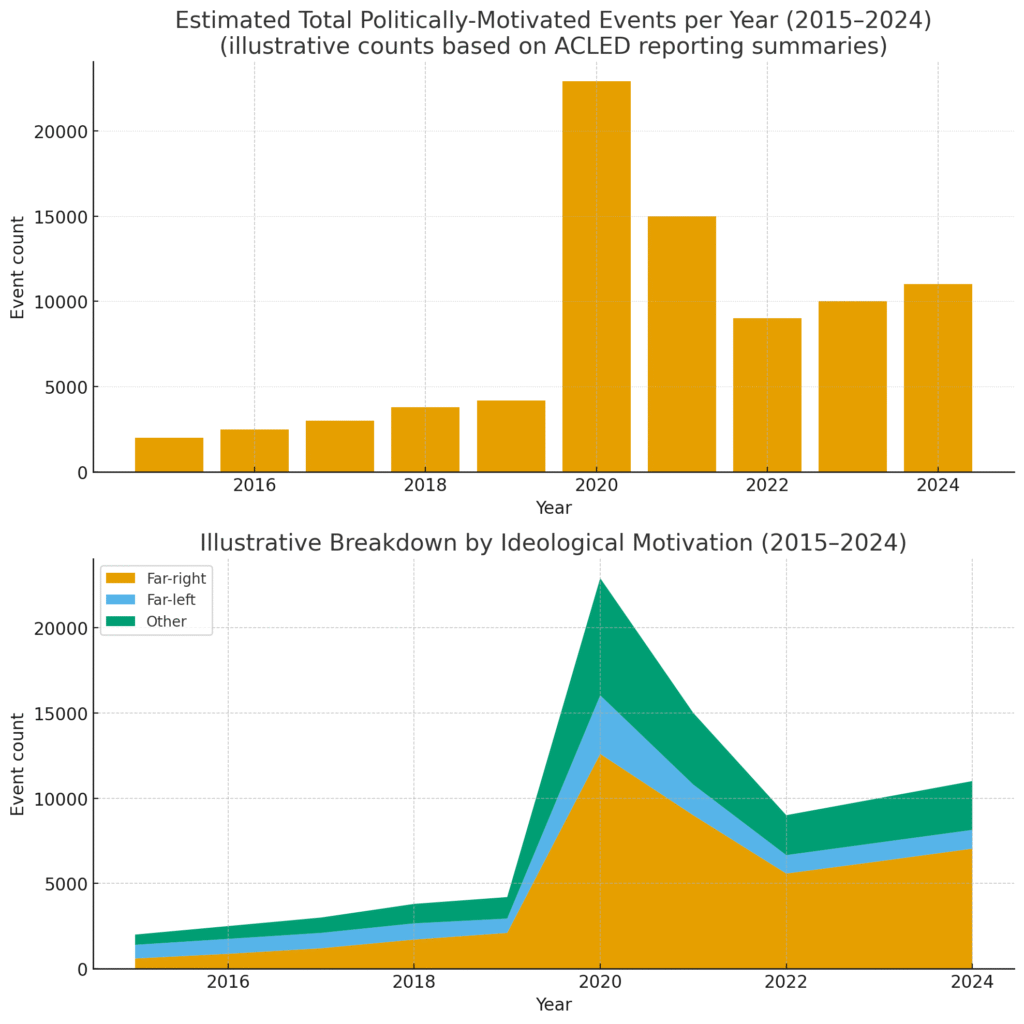
America is facing a crisis of political violence that threatens the very foundations of our democracy. While politicians point fingers and blame their opponents, new research reveals a stark truth about who is really behind the attacks that are making headlines across the nation.
The numbers paint a disturbing picture. Right-wing terrorists account for over half of those murders, Islamists for 21 percent, left-wingers for 22 percent, and 1 percent had unknown or other motivations. This data comes from a comprehensive analysis of politically motivated killings in the United States, shattering common assumptions about political violence.
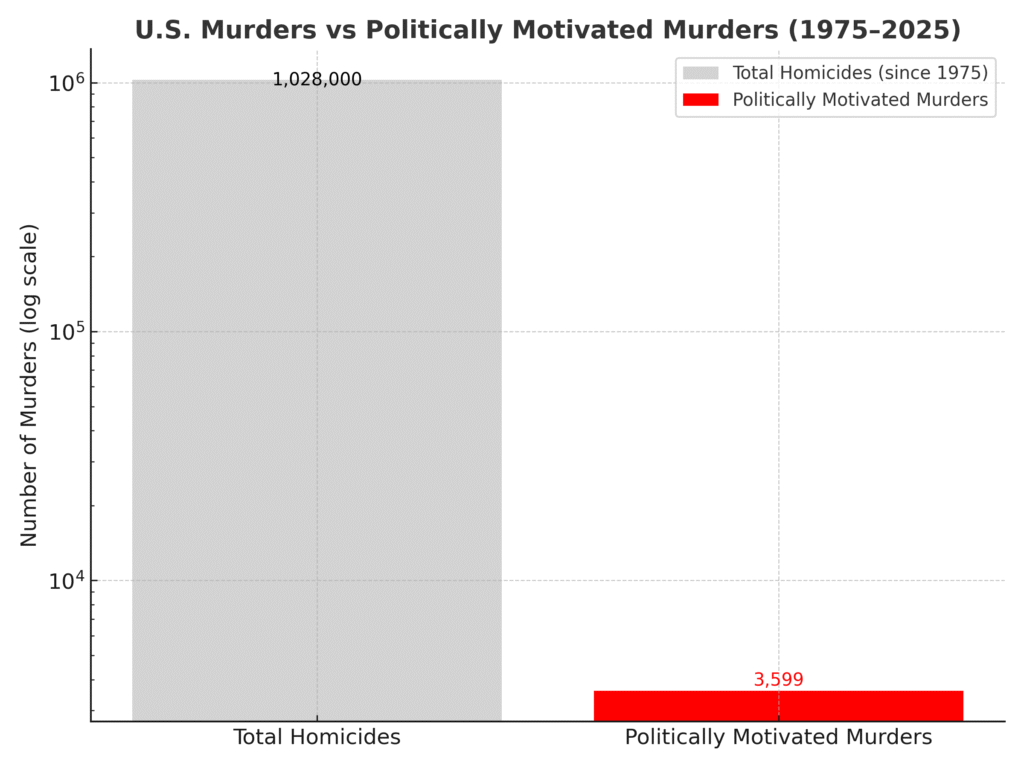
A detailed breakdown of the FBI’s latest crime statistics shows the dramatic changes in politically motivated violence over the past decade.
The reality is more complex than simple left-versus-right narratives suggest. A total of 3,599 people have been murdered in politically motivated terrorist attacks in the United States from 1 January 1975 through 10 September 2025. However, these murders represent only a tiny fraction of all homicides – about 0.35 percent of all murders since 1975.
What makes the current situation particularly alarming is not just the raw numbers, but the trend lines. The country is experiencing targeted increases in ideologically motivated violence even as communities become safer from conventional crime. While overall crime rates have been declining, political violence has been moving in the opposite direction.
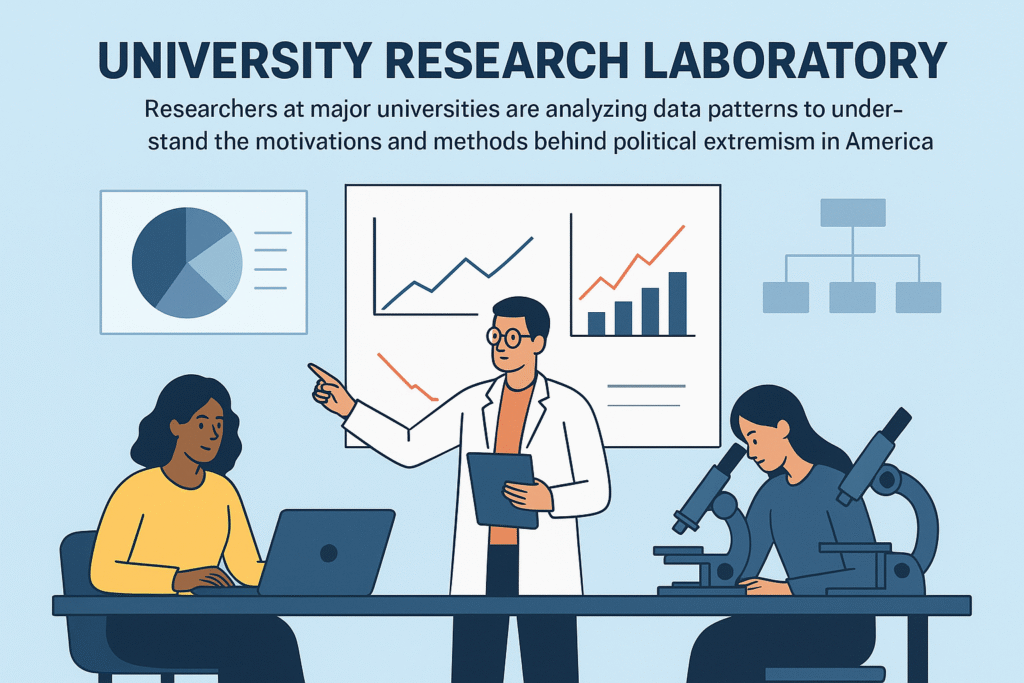
Academic research provides crucial insights into these troubling patterns. A groundbreaking study from the University of Maryland found significant differences between extremist groups. “However, our analysis shows that right-wing actors are significantly more violent than left-wing actors,” said LaFree, a professor in the Department of Criminology and Criminal Justice (CCJS) and the founding director of the National Consortium for the Study of Terrorism and Responses to Terrorism.
The research goes deeper than simple body counts. In both datasets, we find that individuals and attacks associated with left-wing causes are less likely to be violent. This finding challenges narratives that portray political violence as equally distributed across the ideological spectrum.
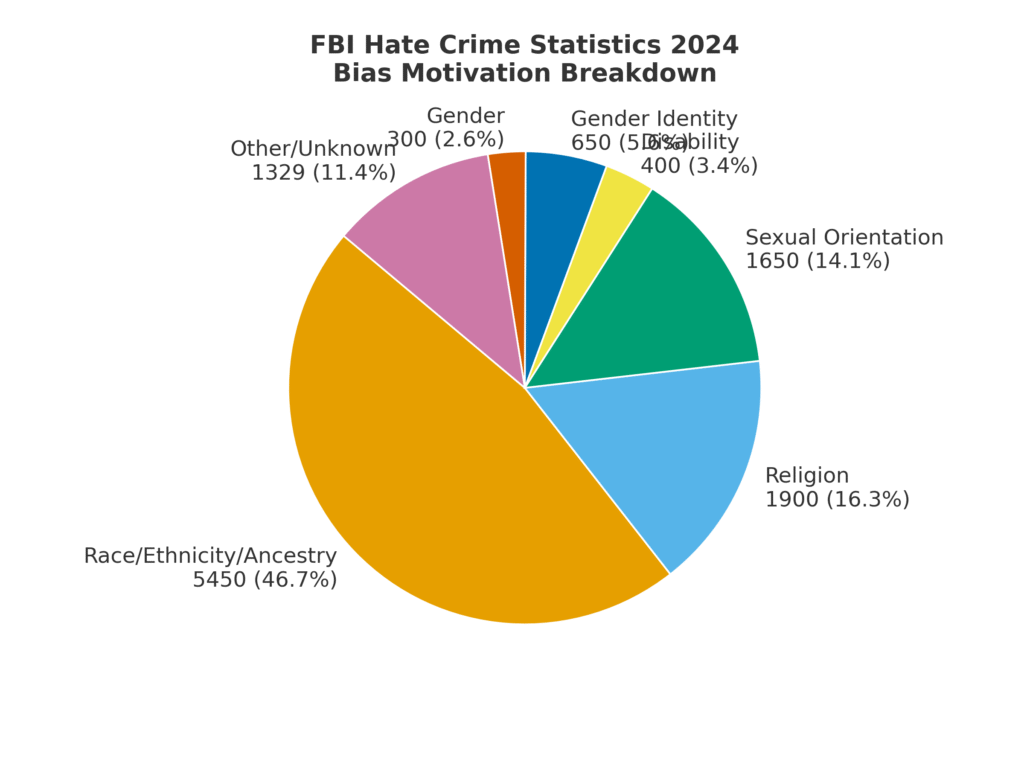
The hate crime statistics tell an equally concerning story. The FBI’s 2024 Hate Crime Statistics show 11,679 incidents involving 14,243 victims, marking the second-worst year on record. These numbers represent real people whose lives have been shattered by ideologically motivated attacks.
The targeting is specific and deliberate. 2024 was the worst year on record for anti-Jewish hate crimes, with 1,938 incidents, while over 2,400 incidents targeted LGBTQ+ Americans. These attacks are not random acts of violence – they are calculated assaults on specific communities.
The threat has become so serious that it is changing how politics operates in America. During the 2024 election cycle, nearly half of all states reported threats against election workers, including social media death threats, intimidation, and doxing. Democracy itself is under attack when the people who run our elections fear for their safety.
Recent events have only intensified these concerns. While politicians often blame their opponents for violence, the data suggests a different story. Although incidents from the left are on the rise, political violence still comes overwhelmingly from the right, whether one looks at the Global Terrorism Database, FBI statistics, or other government or independent counts.
The motivations behind these attacks reveal deeper societal fractures. The motivations align with America’s “culture war” fault lines: Race/Ethnicity/Ancestry: 53.2% of single-bias incidents. This data shows that much of the violence stems from America’s ongoing struggles with diversity and inclusion.
Experts are particularly concerned about what lies ahead. 2025 is set to be a bellwether year for political violence in the United States. While certain risk factors declined in 2024, others intensified, and encouraging trends — like the decrease in mobilization by organized groups prone to violence — are poised to reverse course.
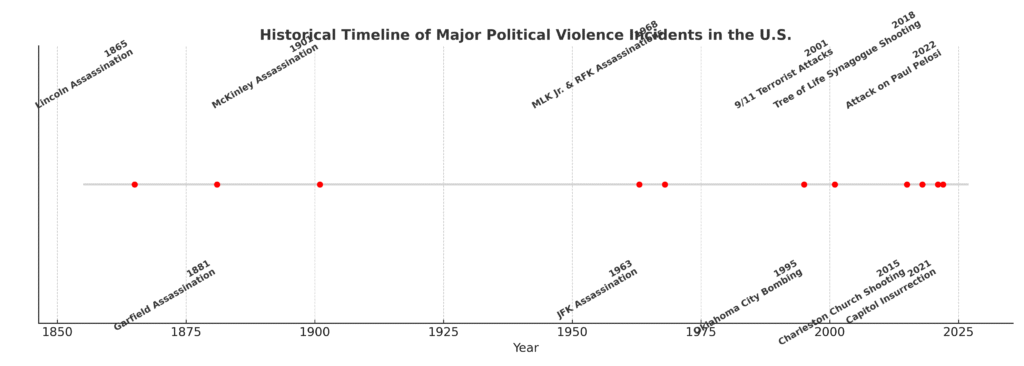
The historical context is important for understanding where we stand today. Political violence has become mainstream in ways that distinguish current threats from past eras. Unlike previous periods of political unrest, today’s violence often receives tacit approval or encouragement from mainstream political figures and media personalities.
The research methodology behind these findings is rigorous. We coded the ideology of the perpetrators into one of five categories: ethnonationalist, left-wing, religious, right-wing, and other (which included motivations that did not fit into any of the categories). This careful categorization helps ensure that the data accurately reflects the authentic sources of political violence.
What makes this situation particularly dangerous is how normalized political violence has become. The data shows that while politicians often blame their opponents for inspiring violence, the reality is more complex. Most political violence comes from a specific ideological direction, but all sides bear some responsibility for the increasingly toxic political environment.
The solution requires honest acknowledgment of the data and a commitment to reducing inflammatory rhetoric across the political spectrum. Until Americans can have honest conversations about the sources of political violence based on facts rather than partisan talking points, the crisis will likely continue to worsen.
As the nation grapples with these challenges, one thing is clear: political violence is not equally distributed across the ideological spectrum, and any serious effort to address the problem must start with acknowledging what the data actually shows. Only then can Americans begin to heal the divisions that are tearing the country apart.

